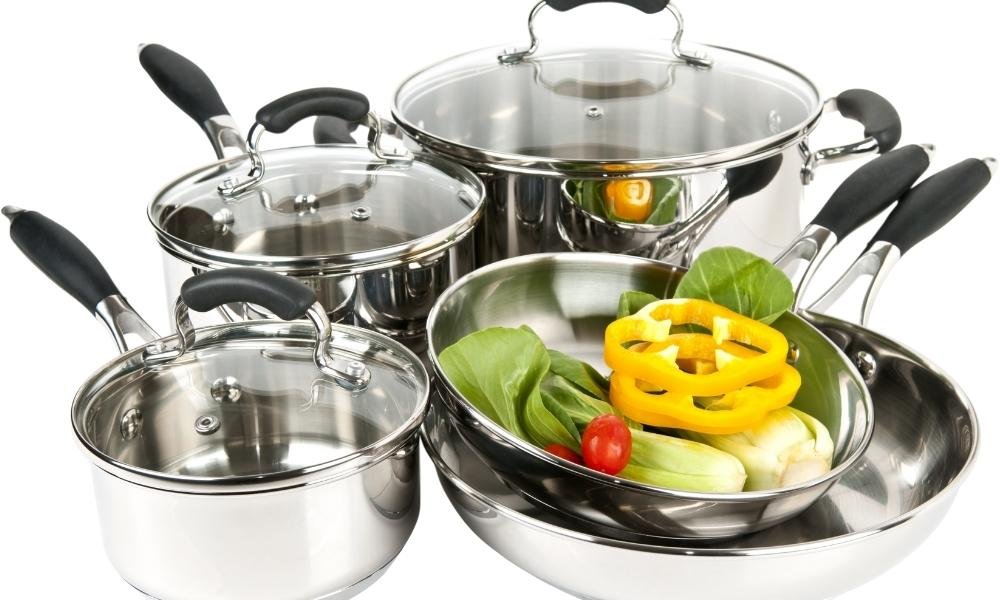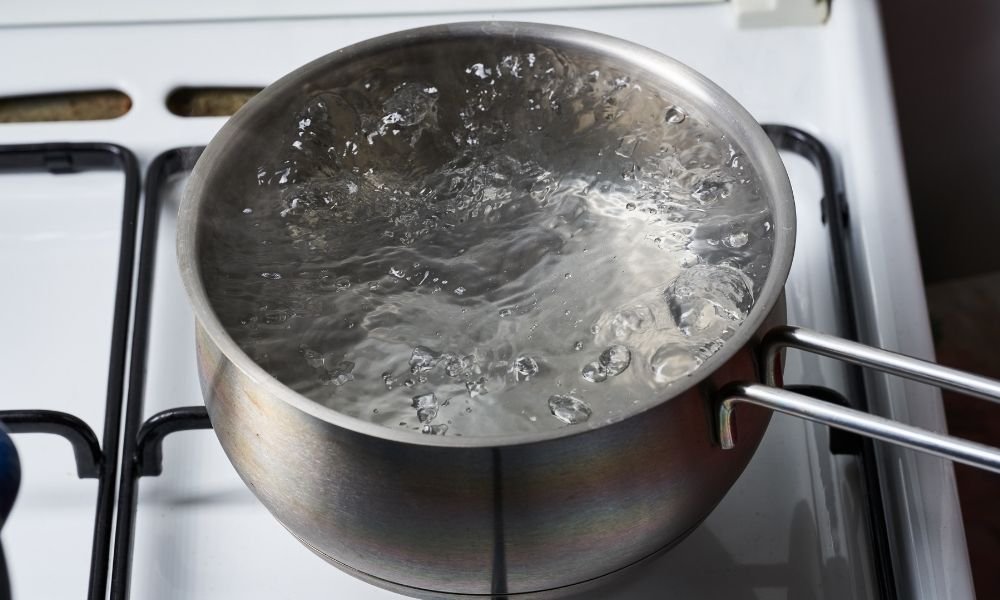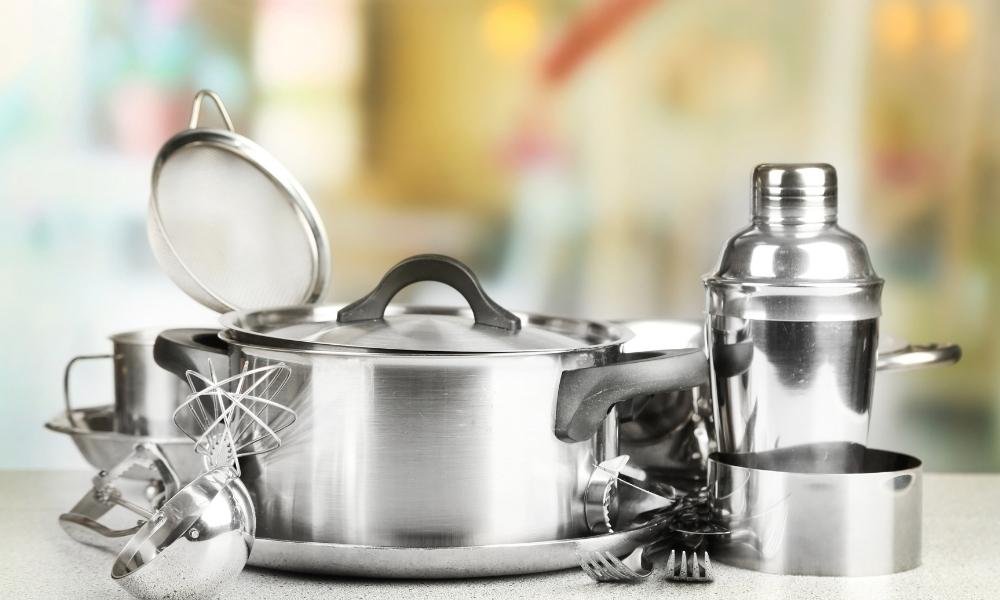Triply stainless steel cookware are in vogue. Owing to their durability, heat retention, and above all being a safer alternative, most health-conscious folks opt for stainless steel and other traditional options.
But, truth be told, there is a learning curve when you start cooking with stainless steel. If you are not careful enough, you may end up ruining your dish or inadvertently damaging your cookware. So, here are a few important tips to keep in mind when cooking with stainless steel.
Never Plunge Hot Pan Into Water
No matter whether you are a newbie or a seasoned chef, you may unwittingly burn your food sometime or the other. When this happens, most people plunge the cookware into cold water in a bid to salvage the food in it.
But, if you do so frequently, your stainless steel cookware could warp. This is because the drastic temperature difference causes the metal to expand and contract at different rates. So, your cookware may bend out of shape or bulge in the centre. As a result, the pan wouldn’t heat evenly or oil may pool to the sides.
So every time you cook in stainless steel, allow it to cool down before cleaning.

Do Not Cook Acidic Food
The 304-grade stainless steel used for cookware contains 18% chromium and 8% nickel. When you cook acidic food, they could leach chromium and nickel into your food. This happens especially when your cookware is new.
So, avoid making tomato and tamarind-based food in your stainless steel cookware, especially when it is new.
Related reading: Best Stainless Steel Frying Pans In India
Preheat and Oil
A major complaint we hear from first-time users of stainless steel cookware is that food gets stuck to the bottom. Unlike non-stick pans, stainless steel doesn’t have any Teflon coating that makes it stick-resistant. So, you need to preheat the cookware on a medium flame for 1-2 minutes. At this point, if you sprinkle water, they will roll as droplets. Now, add sufficient oil and heat till it starts gleaming. This helps build a temporary seasoning. So, when you add food, it doesn’t stick too much to the bottom.
Related reading: Stainless Steel Chopping Boards- Are They Worth It?
Never Add Salt Before Water Starts Boiling
Pitting in stainless steel surfaces is a common problem. And unfortunately, it is irreversible. It occurs when you add salt to the water before it starts boiling. The oxygen in water, chloride in salt, and chromium in the steel react to form these pittings. When water boils, there won’t be enough oxygen for this reaction. So, never add salt before the water starts boiling in stainless steel cookware.

Vinegar For Stains
Overheating stainless steel cookware may result in rainbow-colored stains called heat tint. This doesn’t affect the performance of the cookware but is not aesthetically pleasing. To remove it, dilute water and vinegar in equal quantities and rub it on the cookware using a cloth or non-abrasive scrub. And voila! The heat tint will disappear!
Vinegar also helps get rid of white chalky deposits on stainless steel cookware due to limescale deposits.
You may also like: 9 Things You Need To Know Before Buying A Dishwasher
Baking Soda For Burnt Residue
If you ever burn your food in stainless steel cookware, don’t scrub it maniacally. It may result in unpleasant scratches on the surface. Instead, sprinkle baking soda liberally on the bottom of the cookware. Next, add sufficient water so that the burnt residue is completely immersed and boil it. Once it starts simmering, reduce the flame and scrape the bottom of the pan using a wooden spatula. The burnt residues will come off easily. Switch off the gas and allow it to cool. Then clean it as usual with mild dishwashing soap and non-abrasive scrub.

Dishwasher or Not?
There are two schools of thought on whether to wash stainless steel cookware in a dishwasher or not. Some claim that it may result in scratches and affect its performance. But, many users beg to differ. If you want to baby the cookware and not have any scratches on its cooking surface or the polished exteriors, then avoid cleaning it in the dishwasher. But if you are not so concerned about the aesthetics chuck it into the dishwasher by all means.
Related reading: 5 Ply Stainless Steel Cookware in India: Is It Worth It?
Rethink If You Have a Nickel Allergy
Stainless steel is considered safe and healthy cookware. But, as mentioned earlier, it can leach nickel in small quantities, especially when brand new. This is within the permissible levels and not a cause of concern for most individuals. In fact, food like chocolate, cocoa, beans, legume etc contains nickel in minute quantities.
But, if you are allergic to nickel, then, avoid using stainless steel cookware. You would be better off using cast iron, clay pot, soapstone or such traditional cookware. Else, you can opt for a selected range of Nickel-less cookware available in the market.
You may also like: 7 Best Pressure Cookers In India

With Proper Care, They Can Last Decades
Cast iron is considered the most durable cookware. Many families pass down cast iron cookware as a family heirloom. But good quality triply stainless steel pan doesn’t fare far behind. If you take proper care of it, it can last decades with minimal wear and tear.
